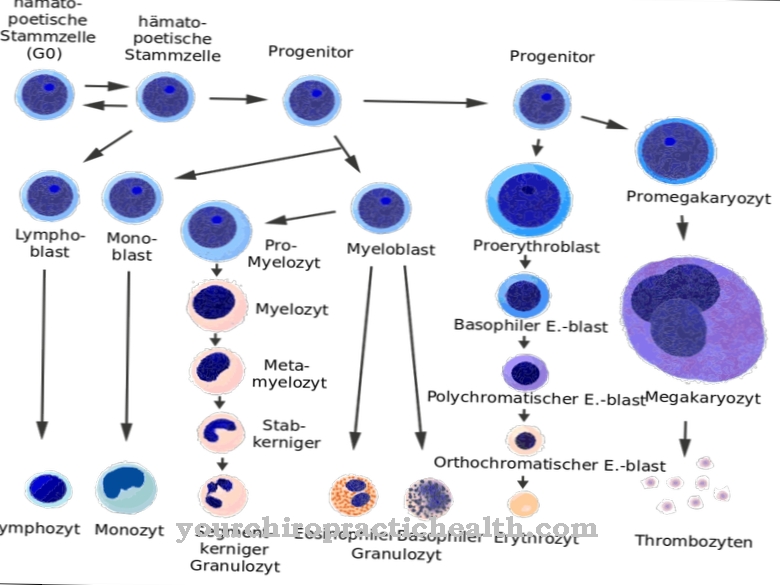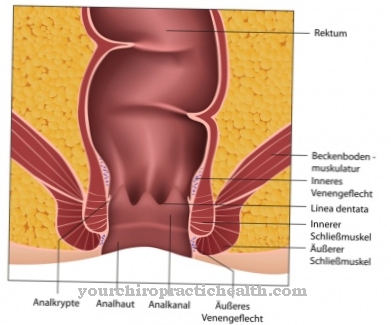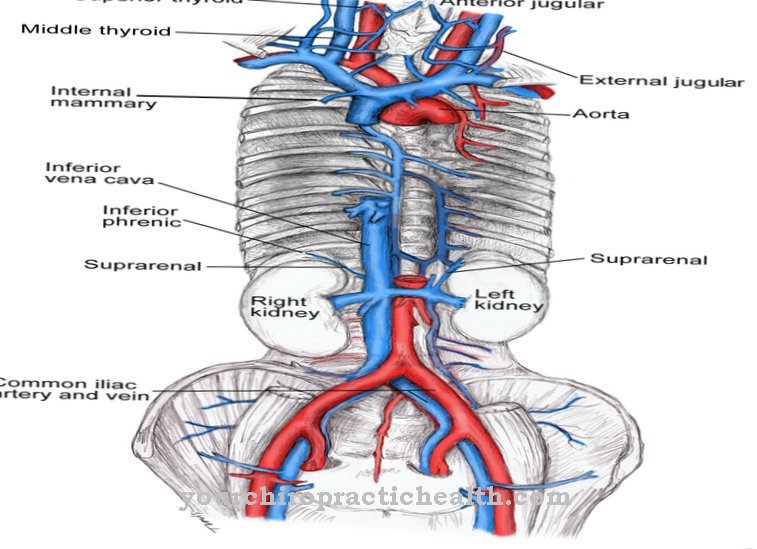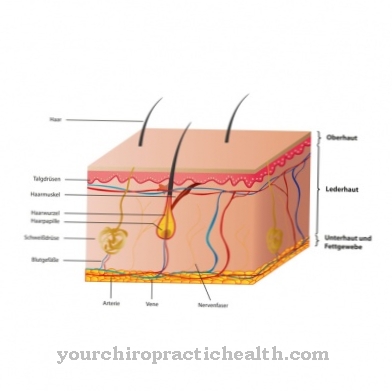Of the Levator scapulae muscle is a muscle of the secondary back muscles. The skeletal muscle is primarily responsible for lifting the shoulders. In many cases, pain symptoms close to the back are rooted in incorrect loading or incorrect posture of the levator scapulae muscle.
What is the levator scapulae muscle?
The autochthonous back muscles or local back muscles are known as the most important part of the active back musculoskeletal system and are made up of different skeletal muscles. In addition to the autochthonous part, the back muscles of humans encompass a secondary part. The secondary muscles of the back include all muscles that arise from extremity buds.
These muscles correspond to the dorsal shoulder girdle and are divided into three different layers: a superficial, a middle and a deep layer. The levator scapulae muscle is a middle layer muscle also known as the scapula lifter. The levator scalpulae muscle has its origin in the transverse processes of the first and second cervical vertebrae and the posterior tuberosity of the third and fourth cervical vertebrae, which attach to the middle edge of the shoulder blade and the upper angle of the shoulder blade. In the literature, the skeletal muscle of the secondary shoulder muscles is also called Levator anguli scapulæ muscle designated.
Anatomy & structure
The long and fine levator scapulae muscle arises at the level of the first and second cervical vertebrae and the third and fourth cervical vertebrae. The individual fibers of the skeletal muscle drop steeply in the lateral and caudal directions and align themselves with the shoulder blade. They each find an attachment at the medial shoulder blade angle and at the medial edge of the bone above the spina scapulae.
The lateral edge of the levator scapulae muscle meets the accessory nerve. The muscle itself is not innervated by this nerve, but by the dorsal scapular nerve, which is a bundle of fibers from the brachial plexus. In addition to these nerve fibers, the muscle receives fibers of the third and fifth cervical nerves from the cervical plexus. In the lateral triangle of the neck, the levator scapulae muscle breaks out during contraction at the medial edge of the trapezoid muscle. Meanwhile, on the anterior side of the neck, it connects to the scalene muscles, with which it grows completely together in individual cases. The muscle receives its blood supply through the arteria dorsalis scapulae.
Function & tasks
The functions of the levator scapulae muscle are derived from the term "shoulder lifter". The secondary back muscle lifts the scapula by contraction in the craniomedial direction. In addition, it is involved in the medial shoulder rotation in interaction with other muscles in the same region. More specifically, the levator scapulae muscle assists the medial rotation of the lower shoulder edges. Because of this function, the muscle is seen as a depressor.
With the return of the elevated arm, he is responsible for the depression of the arm from the elevation. In addition, the muscle contraction moves the inferior angle away from the body. The result is a slight tilting of the shoulder blades upwards. Contrary to what the name suggests, the skeletal muscle moves not only the shoulder blades and the arm. Once the scapula is held in a fixed position, the contraction of the levator scapulae also moves the neck.
The skeletal muscle inclines the neck or the cervical spine with a fixed shoulder position, more precisely to the same side of the shoulder. The skeletal muscle is responsible for the lateral flexion of the cervical spine. Despite the multifunctionality, the most important function is felt to be the function that has been incorporated into the name of the muscle. The shoulder elevation is therefore the main task of the levator scapulae muscle. One condition for fulfilling this main function is the integrity of the motor innervation.
You can find your medication here
➔ Medicines for joint painDiseases
The levator scapulae muscle is a skeletal muscle that is relatively often of pathological importance. In everyday clinical practice, different clinical pictures and symptoms are observed that are directly related to the back muscles. Paralysis of the muscle, which is based on isolated damage to the dorsal scapular nerve, occurs rather rarely.
This nerve is responsible for the motor connection of the skeletal muscle to the central nervous system and can be damaged, for example, by trauma, poisoning, malnutrition symptoms, inflammation or tumors. Lesions of the dorsal nerve partially or completely paralyze the levator scapula. A paralysis of the muscle becomes noticeable through symptoms such as bad posture. The wing-like protrusion of the shoulder blades is one of these symptoms of incorrect posture. Since the muscle can no longer be contracted in the event of paralysis, the tissue recedes over time.
This phenomenon is known as muscular atrophy, which is not uncommon in the context of persistent paresis. In most cases, muscle paralysis occurs in combination with paresis of the rhomboid muscles and therefore does not appear as an isolated paralysis. Affected patients usually do not register any clear symptoms for a long time, since the levator scapulae muscle is more likely to be neglected in the context of everyday movements. For this reason, the diagnosis of paresis is often made much too late to be able to intervene positively. In clinical practice, stiffening or incorrect loading of the levator scapulae muscle is diagnosed far more frequently than paresis.
In many cases, the skeletal muscle is the source of pain symptoms near the back.Stiffening of the shoulder lifter can be the cause of chronic back pain, for example. The causes for this phenomenon are manifold. Shoulder bags that are too heavy put a strain on the secondary back muscles, for example, as do convulsively raised shoulders in everyday work or sleeping positions on the side without head support.













.jpg)

.jpg)
.jpg)











.jpg)